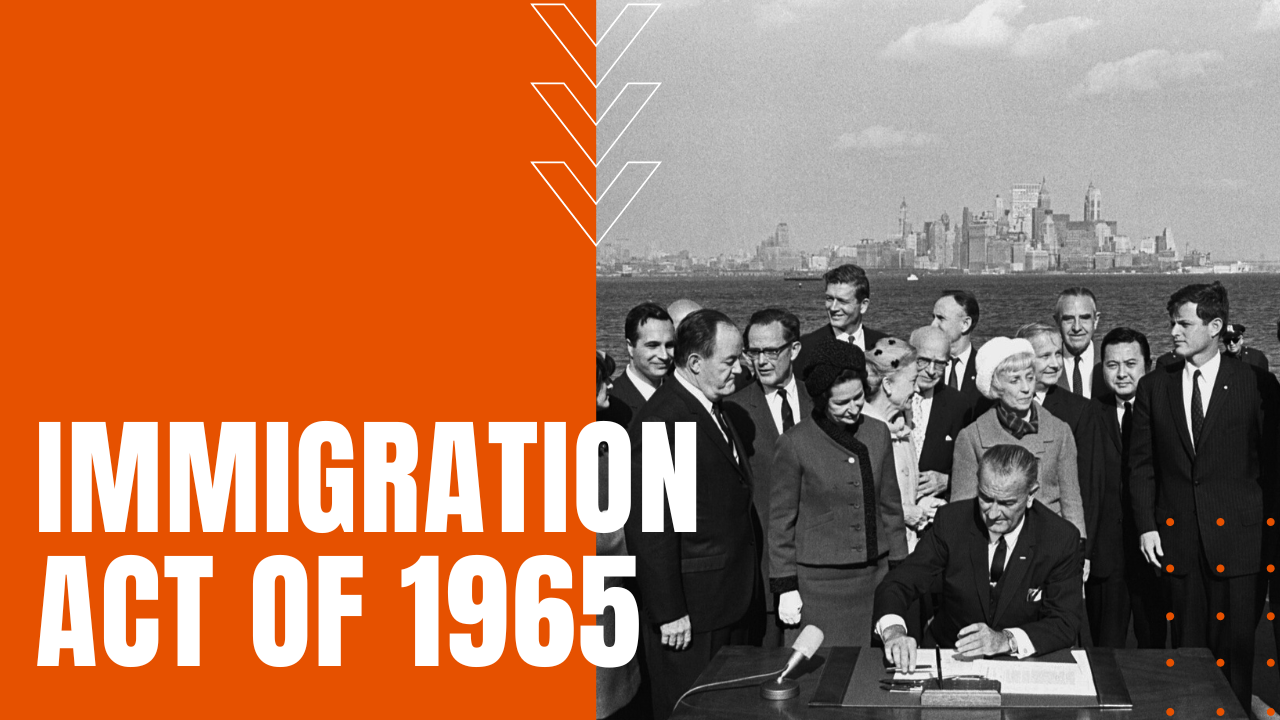Immigration Act of 1965

In a nation populated mainly by periodic waves of foreign immigration, since its early inception, generations of American legislators have challenged and oftentimes limited certain ethnic populations seeking entry into the United States, including the Chinese Exclusion Act of 1882.
Strips Prior Acts of Authority
Other limiting bills included the Immigration Act of 1917, which established literacy requirements from immigrants arriving from Asia, and the Immigration Act of 1924, which banned Asian immigration entirely, while setting quotas on the number of immigrants allowed in from Eastern and Southern European nations—the later spawned by a xenophobic and quite racist belief that immigrants from these regions were simply too foreign for America.
A New Dawn
That all ended during the 1960s, when the 89th U.S. Congress passed the Immigration and Nationality Act of 1965—also known as the Hart-Celler Act—so named for the legislators that helped move the bill through both houses of Congress. Signed into law by President Lyndon Baines Johnson on December 1st, 1965, the bill overturned the system of quotas set forth in the Immigration Act of 1924, which in turn opened up a new stream of inbound migration, primarily from Asia and Latin America, effectively changing the character and melting pot complexion of American immigration history.
Acts of Liberalization
Combined with the Civil Rights Act of 1964 and the Voting Rights Act of 1965, the Immigration and Nationality Act created a triumvirate of legislation spawned by the civil rights movement, establishing a conscious attempt by American politicians to remove racial and national criteria from all aspects of American law.
Shifting Demographics
According to the Pew Research Center, in 1960, 84 percent of U.S. immigrants were born in Canada or Europe, while 9.5 percent came from Latin America and 3.8 percent from Asia. In 2017, by contrast, 13.2 percent came from Canada or Europe, 50.4 percent from Latin America and 27.4 percent from Asia, making the Immigration Act of 1965, an equalization milestone for immigrants in search of a better life.
